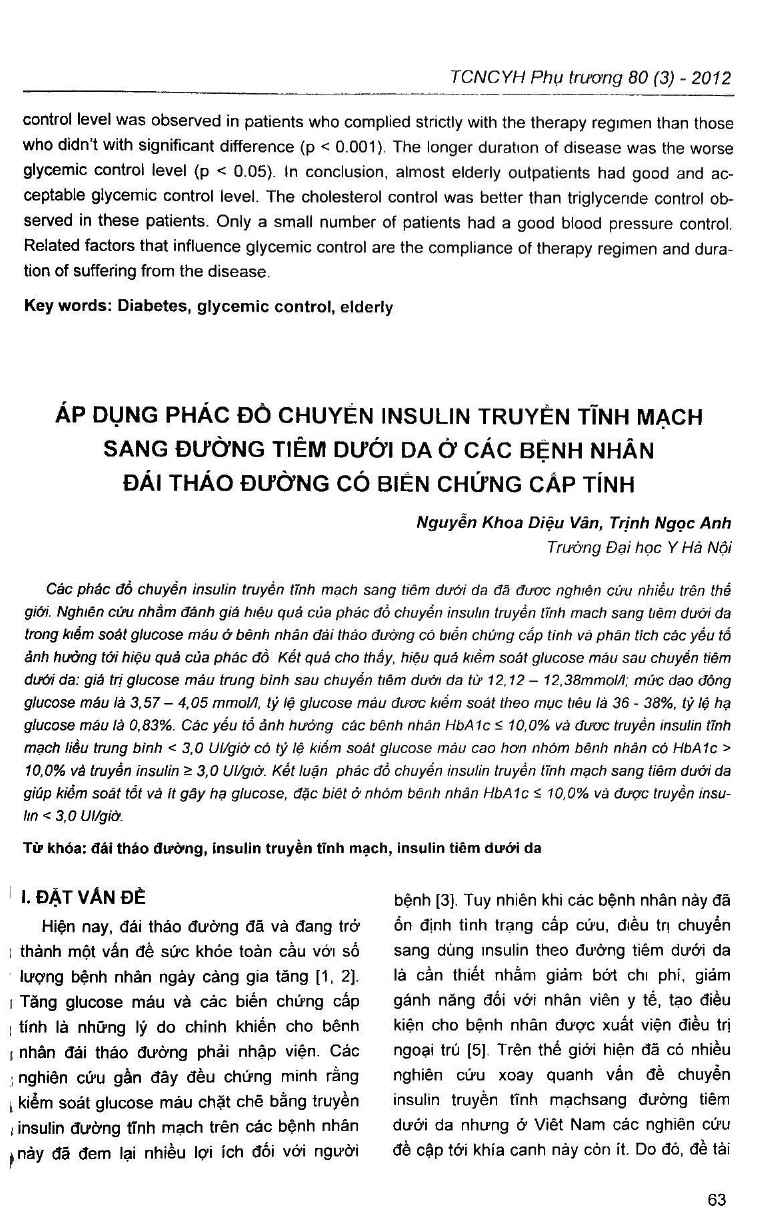
Studies on the protocol of conversion from intravenous to subcutaneous insulin have been carried out around the world. The study was to evaluate the glycemic control efficacy of intravenous to subcutaneous insulin conversion protocol in diabetic patients suffering from acute complications and to analyze factors which might have influence on the efficacy of this protocol. The results indicated that efficacy of glycemic control: the mean capillary blood glucose levels after insulin transition were 12.12 - 12.38 mmol/l; glucose variability levels after transition were 3.57 - 4.05 mmol/l; the percentage of capillary blood glucose measured (CBGM) values in the predefined study target range were 36 percent to 38 percent; the incidence of hypoglycemic episode was 0.83 percent. Factors which might have influence on the efficacy of the protocol: patients having HbA 1 c 10.0 percent and intravenous insulin infusion rate 3.0 UI/h had higher percentage of CBGM values in the target range in comparison to those having HbA 1 c 10.0 percent or intravenous insulin infusion rate or = 3.0 UI/h. In conclusion, using intravenous - subcutaneous insulin transition protocol in diabetic patients with acute complications helped control effectively the CBGM within target range with low incidence of hypoglycemia, especially in groups with HbA1c 10.0 percent and insulin infusion rate or
- Đăng nhập để gửi ý kiến
